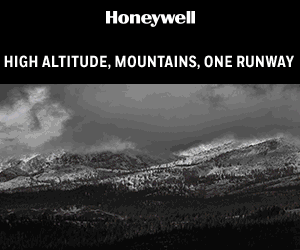SmartRunway and SmartLanding
The Leading Safety Solution That Reduces the White-Knuckle Approaches and Takeoffs at Challenging Airports
For business aviation operators that want to reduce the potential for runway incursions or excursions, Honeywell’s SmartRunway® / SmartLanding® provide timely messages that alert the pilots to a number of situations that could escalate and result in an incursion or excursion as opposed to relying on current systems in the aircraft (including the pilots) that DO NOT provide this enhanced capability.

We do this by increasing the capability of the software previously installed on our Enhanced Ground Proximity Warning System, thereby enabling those existing systems to provide aural and visual alerts (on terrain display) to the pilots during key phases of operation of a situation that could lead to an incursion or excursion event.
System capability has been demonstrated by numerous testimonials and Aviation Safety Group reports indicating that the presence of SmartRunway / SmartLanding could have helped to avoid an incident or accident.
Speaking of savings - operators can now take advantage of new 100 percent tax write-off for component upgrades.
Comparison Chart
|
Capability (Click on the following for animated features and video) |
RAAS |
Smart Runway |
Smart Landing |
|
X |
X |
|
|
|
X |
X |
|
|
|
|
X |
||
|
X |
X |
||
|
X |
X |
||
|
|
X |
||
|
X |
X |
||
|
X |
X |
||
|
|
X |
|
|
|
X |
X |
X |
|
|
X |
X |
X |
|
|
|
X |
X |
|
|
|
X |
X |
|
|
X |
X |
X |
|
|
X |
X |
X |
|
|
|
|
X |
|
|
|
|
X |
|
|
|
|
X |
|
|
|
|
X |
|
|
|
|
X |
|
|
|
|
X |
|
|
|
|
X |
|
|
|
|
X |
SmartRunway and SmartLanding provides the alerts you need to approach the most challenging airports with confidence:
Aspen-Pitkin County Airport - Aspen, Colorado
Challenges: Pilots flying into Aspen-Pitkin County Airport require special training as they face a steep approach path and must use a separate navigation aid if they need to pursue a missed approach. Furthermore, pilots land one direction and take off from the opposite direction using a single runway due to surrounding, mountainous terrain.
Bert Mooney Airport - Butte, Montana
Challenges: Nestled between Yellowstone and Glacier National Parks, Butte is a great outdoor destination, though pilots must navigate numerous obstructions flying into this airport.And there isn’t a control tower making landing here even more challenging.
Yellowstone Regional Airport - Cody, Wyoming
Challenges: While the beautiful mountains make Yellowstone a prime destination, the mountainous terrain surrounding this airport makes landing challenging for pilots, especially since there’s no control tower. Pilots have no approach control and must pursue non-precision approaches only.
Ronald Reagan Washington National Airport - Washington, D.C.
Challenges: While passengers get a great view of national monuments like the White House and the Pentagon during landing, pilots must dodge several no-fly zones located over D.C. and navigate a “River Visual” approach requiring a 30 to 40 degree turn close to the Potomac River to line up with the runway.
Juneau (Alaska) International Airport
Challenges: Ever since commercial air services to Juneau started in 1947, the mountainous terrain and surrounding valleys have made landing challenging for both commercial and business aviation pilots.
Mammoth Yosemite Airport - Mammoth Lakes, California
Challenges: Mammoth Yosemite Airport is located on the side of a mountain in a box canyon creating a difficult approach, especially in mountainous weather conditions.
San Diego (California) International Airport
Challenges: Flying into any busy airport can be challenging, but San Diego International’s steep approach path that brings pilots over the city and strong tailwinds in the area create an even bigger landing challenge.
Telluride Regional Airport - Telluride, Colorado
Challenges: Telluride is the highest commercial airport in the U.S. Mountainous terrain creates an especially difficult approach for pilots.
